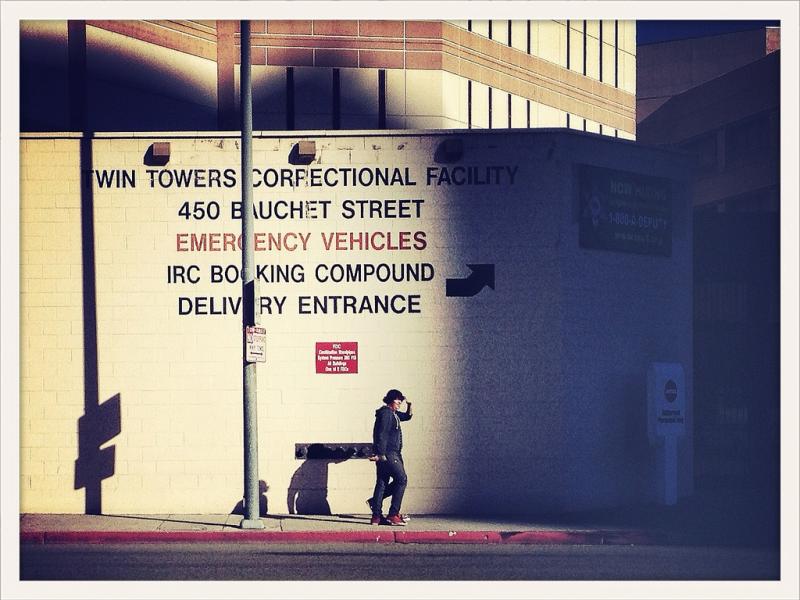Jerry Brown's Prison Policies: Conservatives Disapprove, Too

These extraordinary provisions embodied the “tough on crime” stance taken up by conservatives in the last decades of the 20th century—a stance largely responsible for the fact that although just 5% of the global population lives here, we are home to 25% of the world’s imprisoned population. For decades, California was one of the foremost states in embracing tough on crime policy, and it still is: home of the notorious “three strikes and you’re out” law (amended slightly in 2012) and 21 new prisons between 1984 and 2006, a federal panel of judges has repeatedly ordered an obstinate Gov. Jerry Brown to release thousands of state prisoners to relieve overcrowding.
With each appeal of the federal court order, Brown and California reveal themselves as out of touch with the current understanding of best prison practices. Formerly the domain of lefties and “progressives,” prison reform has lately become a bipartisan project and a key item on the conservative agenda.
“It’s a revolutionary but welcome reform,” says George Newhouse, Jr., a trial lawyer who teaches “The Politics of Local Criminal Justice” in USC’s Political Science department. “Conservatives have just been traditionally lock and key people, you know, take the criminals and exclude them from society… it’s refreshing to see that conservatives are getting back to their true principles.”
In a 2011 Washington Post op-ed co-authored with conservative activist Pat Nolan, Gingrich himself made known that he had done an about-face on prison policy, writing: “There is an urgent need to address the astronomical growth in the prison population, with its huge costs in dollars and lost human potential. We spent $68 billion in 2010 on corrections - 300 percent more than 25 years ago. The prison population is growing 13 times faster than the general population. These facts should trouble every American.”
Former Attorney General Ed Meese, Americans for Tax Reform founder Grover Norquist, and former Florida Gov. Jeb Bush are on board as well, all participants in the Texas-based Right On Crime campaign, whose slogan is “Fighting Crime, Prioritizing Victims, and Protecting Taxpayers.” In a recent piece for the New York Times titled “The Conservative Case for Prison Reform,” ConservativeHQ.com chairman Richard A. Viguerie wrote, “Conservatives should recognize that the entire criminal justice system is another government spending program fraught with the issues that plague all government programs.” Pointing out that state spending on prisons has more than quintupled since 1985, Viguerie observed that throwing money at prison construction has failed to deter crime: national recidivism rates exceed 40%.
And it’s not just the fiscal principles of conservatism that are incompatible with a mushrooming corrections system, but also the corresponding growth of government power and the disruption of families and communities. In fact, an outrageously bloated corrections system is so out of sync with conservative ideals that one wonders why it has taken decades for the idea of reform to take hold.
Marc Levin, Right on Crime’s Policy Director, agrees that the burden on taxpayers is only one reason for a conservative change of heart. “The fiscal realities are kind of the appetizer, but the main course is ‘Here are things that actually can give you better public safety,’” he says, citing research that an offender who receives treatment for addiction is less likely to commit future crimes than an offender who is simply locked up.
California, it seems, has not yet gotten the memo. “Things have transpired quite a bit differently in California than in a lot of the states where we’ve seen policymakers and elected officials take more proactive steps,” Levin says, pointing out that in the past year legislators in Texas, Georgia, Pennsylvania and other states have acted to reduce prison overcrowding before a federal court might see fit to intervene, as it did in California in 2011. The court order to reduce California’s prison population by 32,000 inmates within two years led to Gov. Brown’s “realignment” plan, which reduced prison numbers by sending inmates whose offenses were nonviolent and nonsexual to county jails instead.
Levin notes the common concern that realignment could amount to no more than a reshuffling of bodies from prisons to jails, with counties using their realignment budgets to add more beds rather than rethink the state’s lock-‘em-up policies. Some counties, however, are using their funds to strengthen research-proven alternatives or supplements to plain incarceration, such as drug treatment programs and probation programs. Other counties are looking to the free market, hiring private “correctional service providers” firms to monitor nonviolent offenders via GPS ankle bracelets (offenders must pay for their own bracelets).
Allowing offenders to remain closer to their communities, in county facilities or in home detention, could alleviate some of the collateral damage of mass incarceration: families struggling with the financial and emotional burdens of loved ones doing time, and whole neighborhoods missing many of their residents. “One of the conservative principles historically has been local control,” Levin points out. “Those corrections programs that leverage families, social services, religious groups, and nonprofit groups that are in the community, rather than sending the offender hundreds of miles away, those can be some of the most effective approaches, so [realignment] is a great opportunity for California.”
Given California’s blue state status, will Right on Crime and like-minded prison reformers get a platform here? As of now, Ward Connerly of the American Civil Rights Institute is the only one of 61 signatories to Right on Crime’s “Statement of Principals” is based in California.
USC professor Newhouse, himself a conservative, is optimistic. “We conservatives certainly seem to be more and more outnumbered these days,” he says, “but this is a kind of issue that I think could receive fairly broad bipartisan support. There are some avenues here where that could be very much supported in California.”
Read more Neon Tommy coverage of California prisons here.



